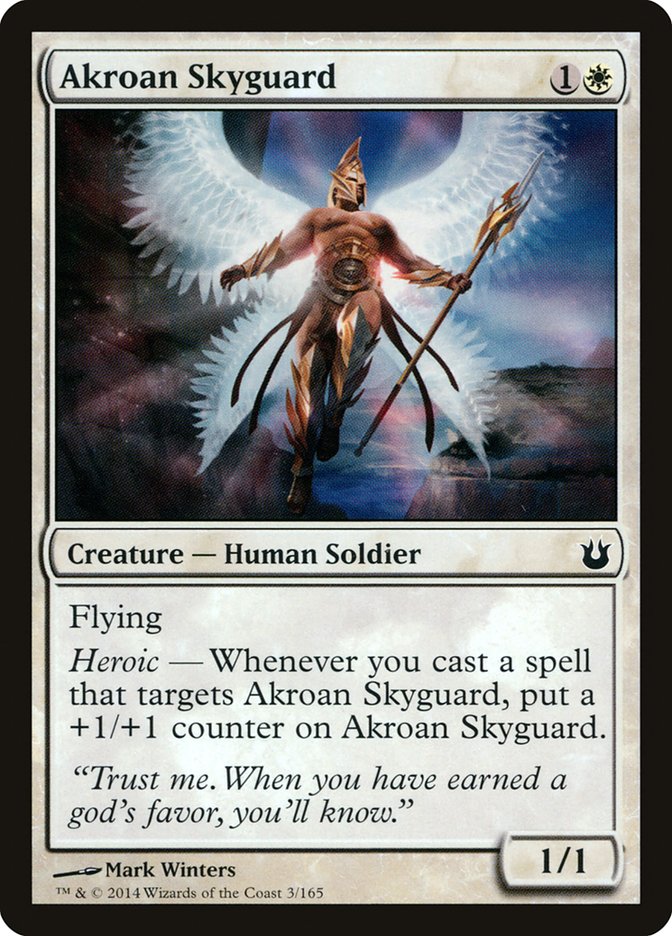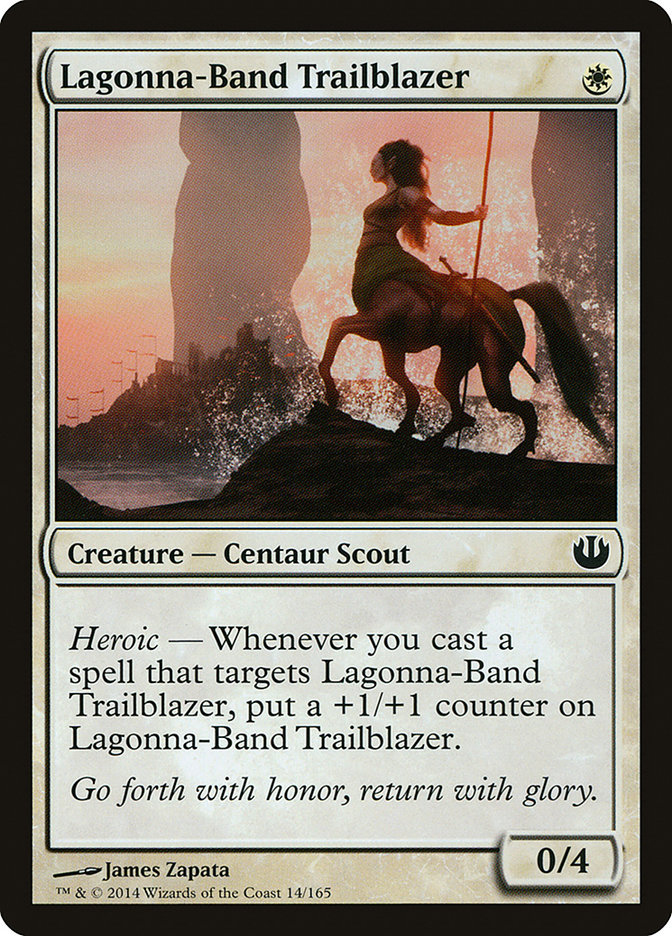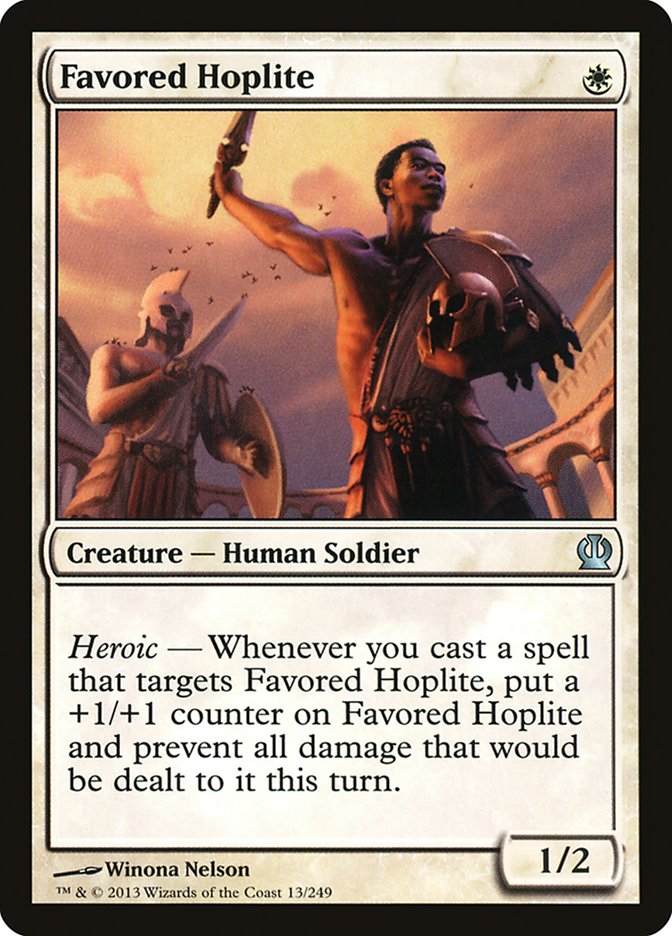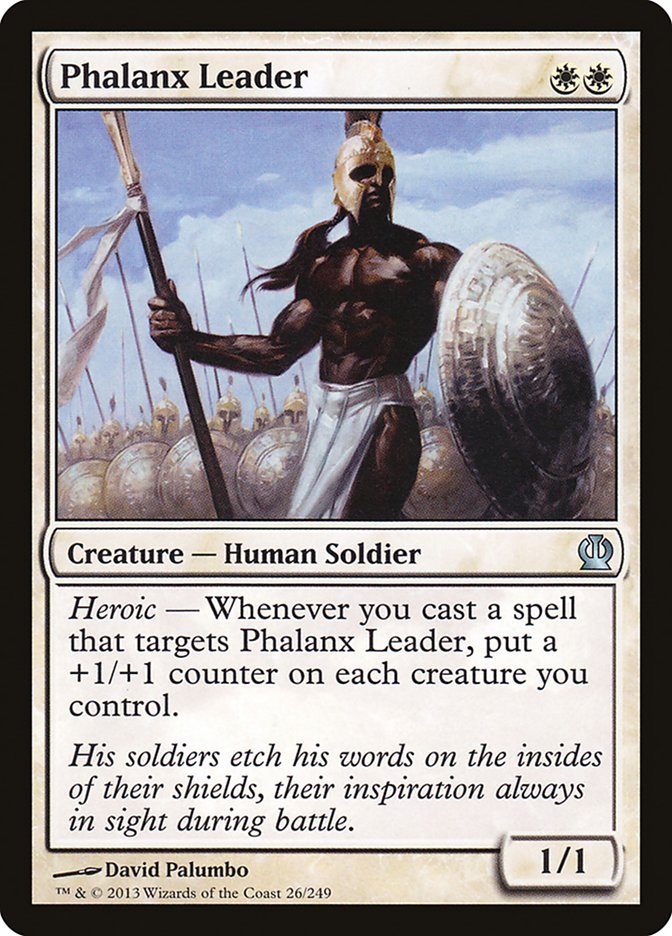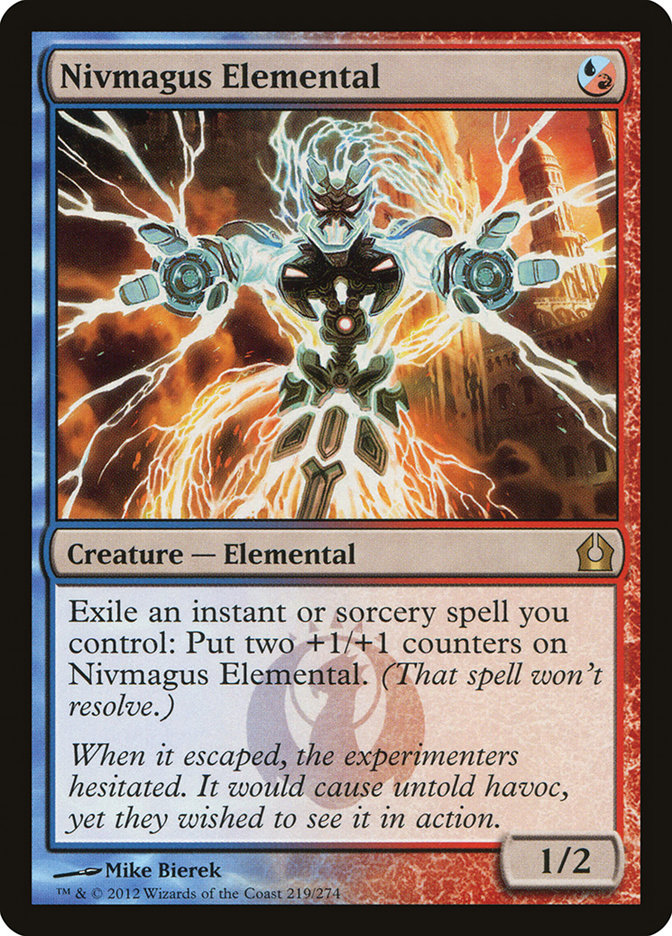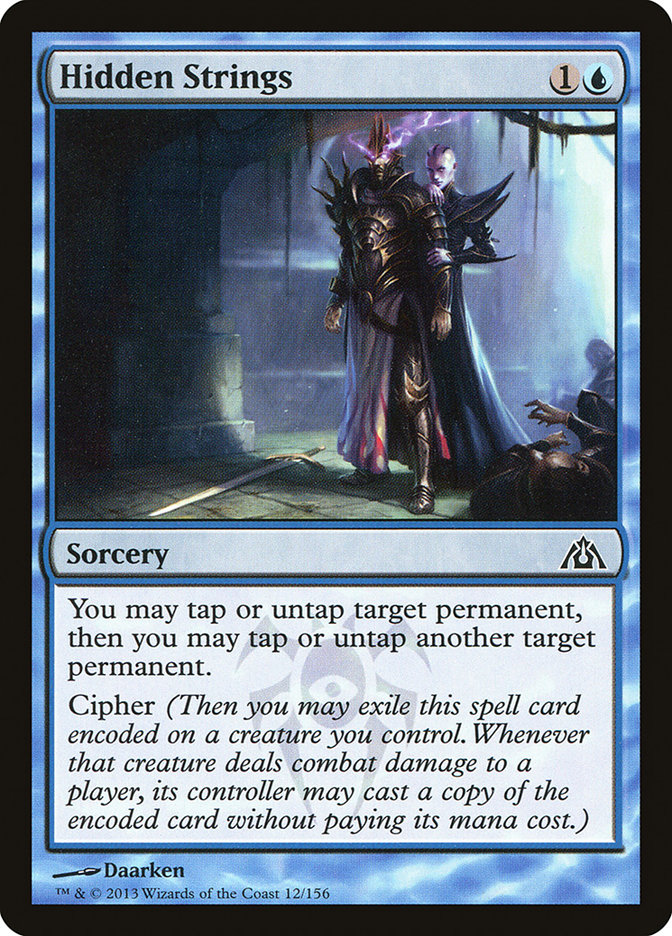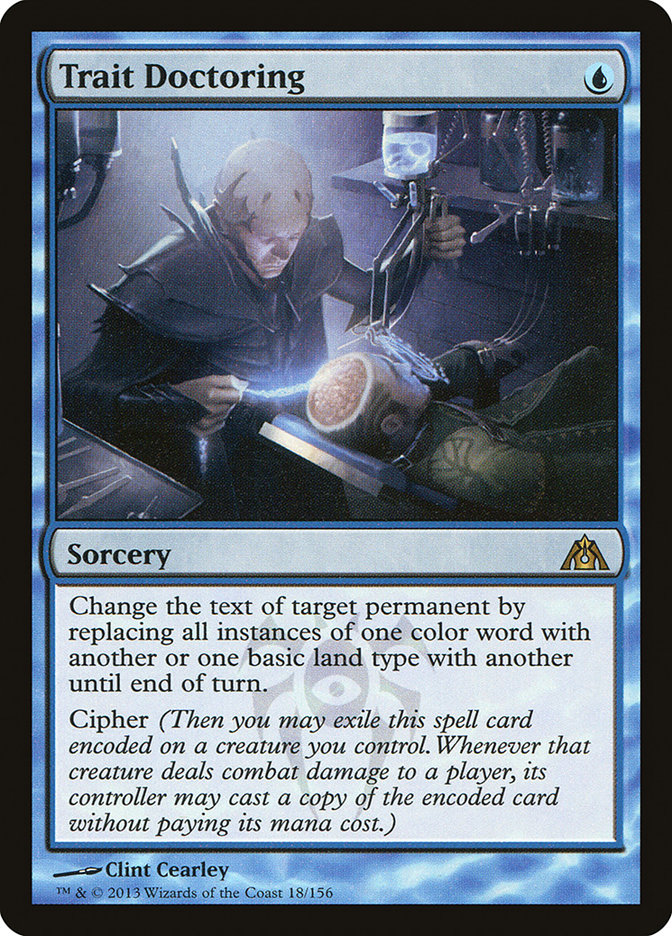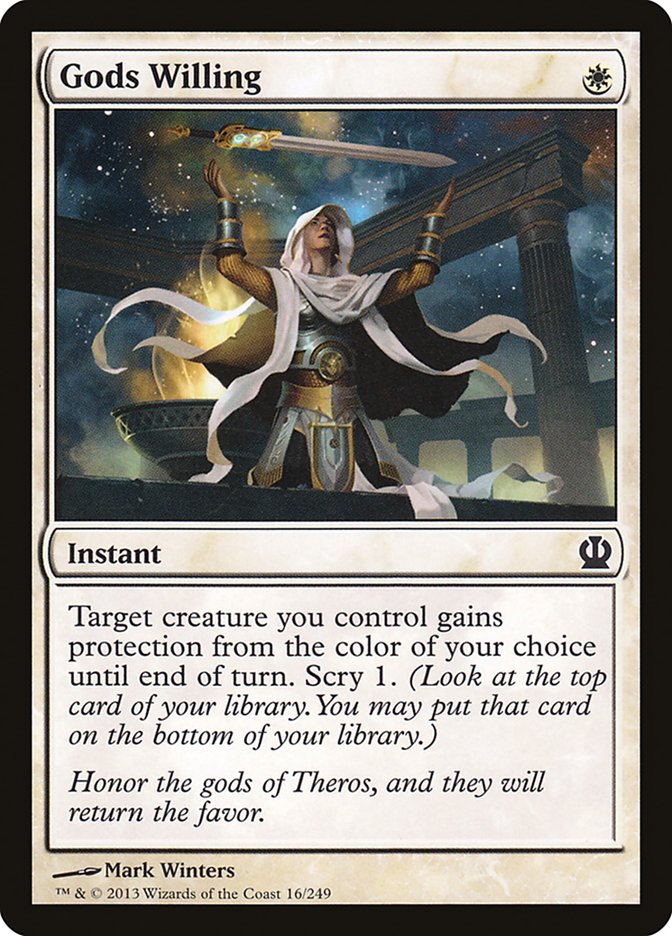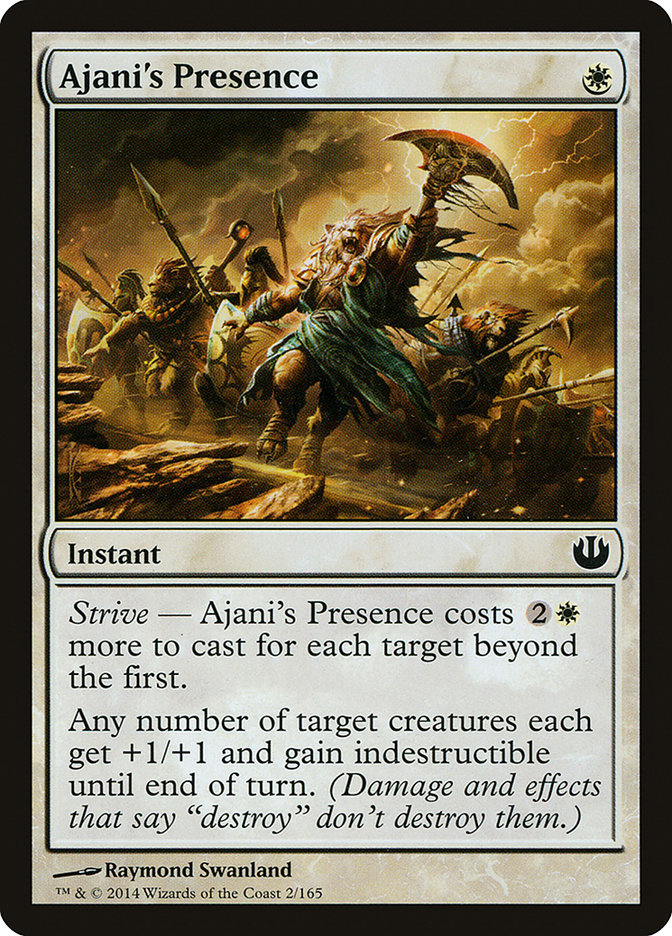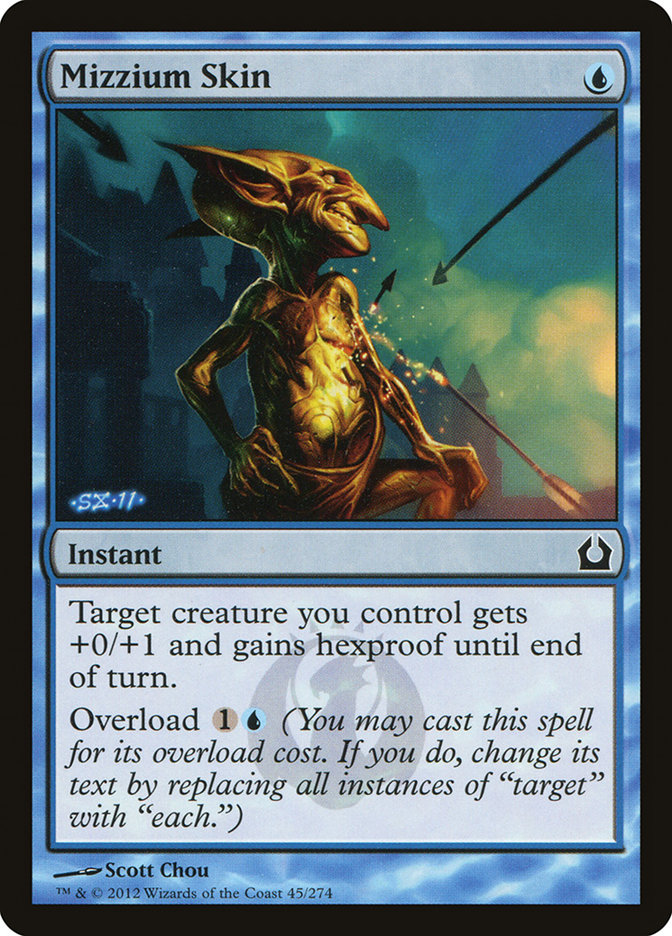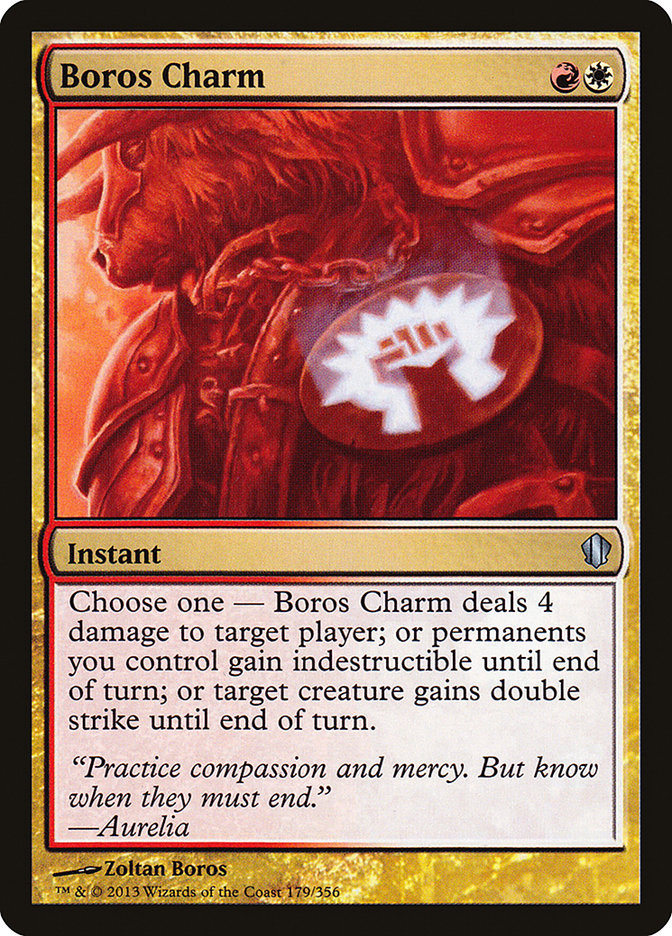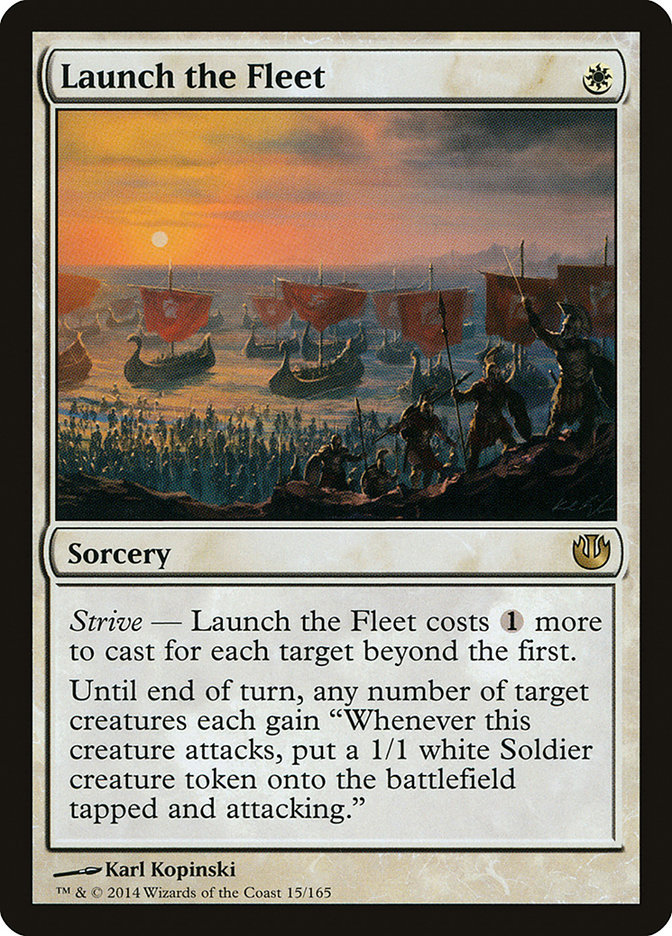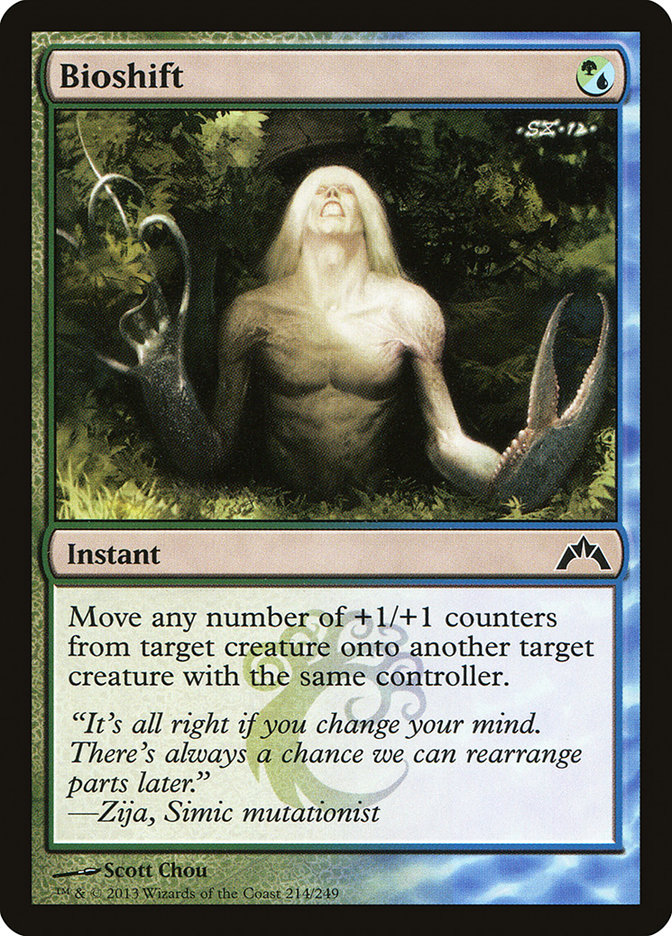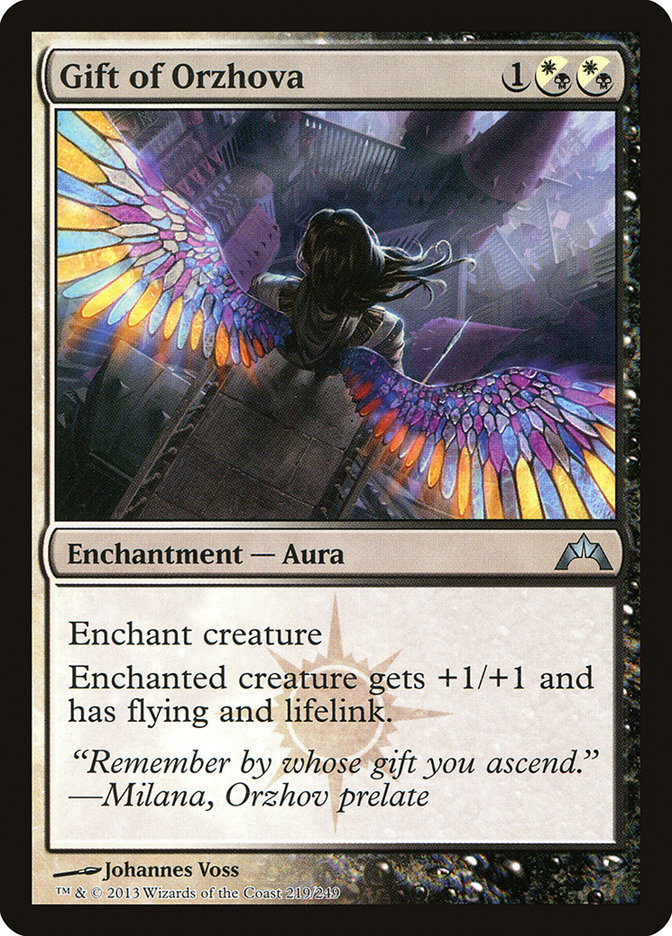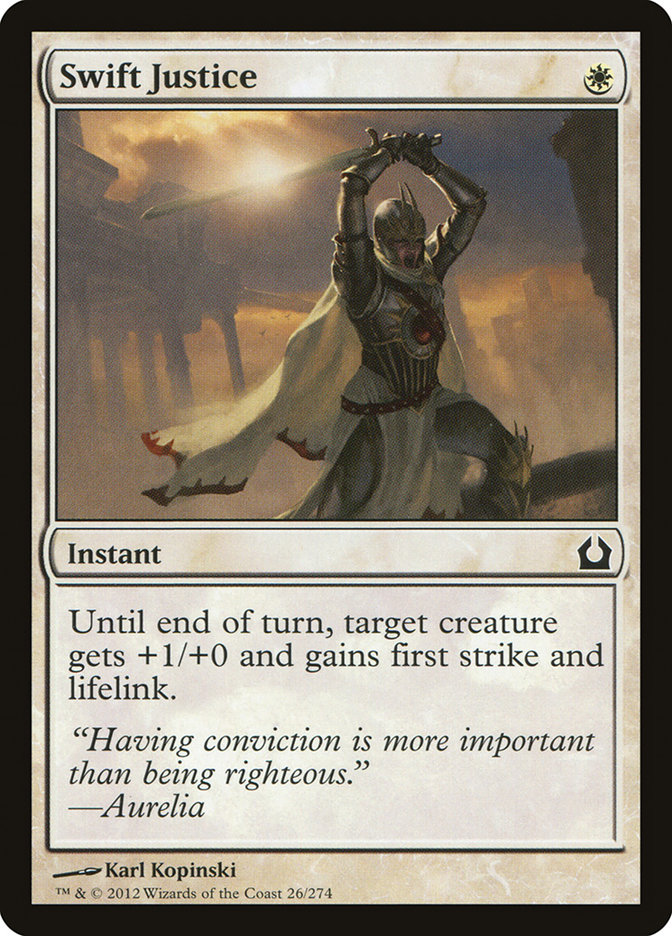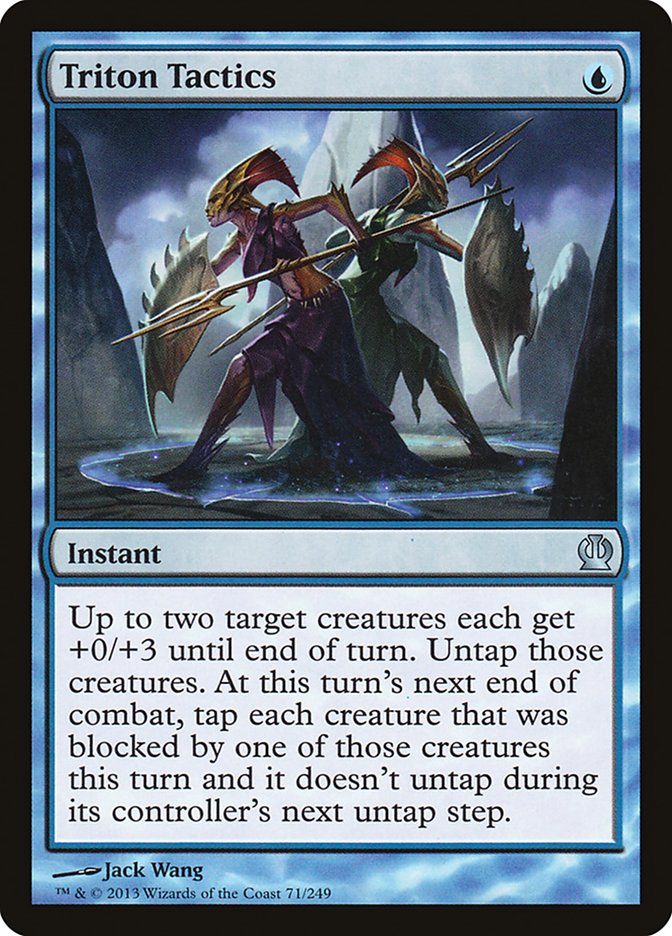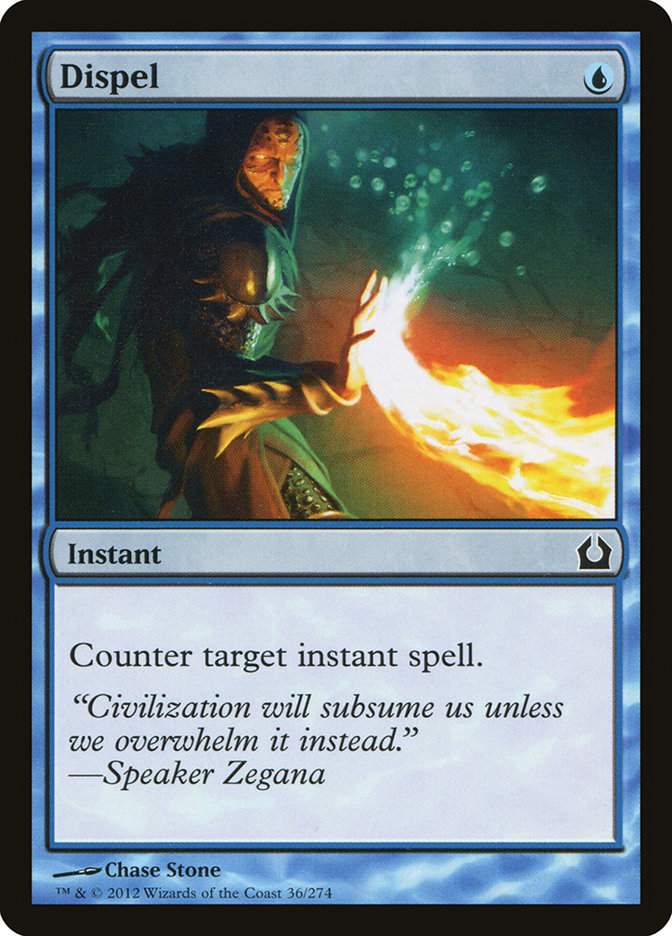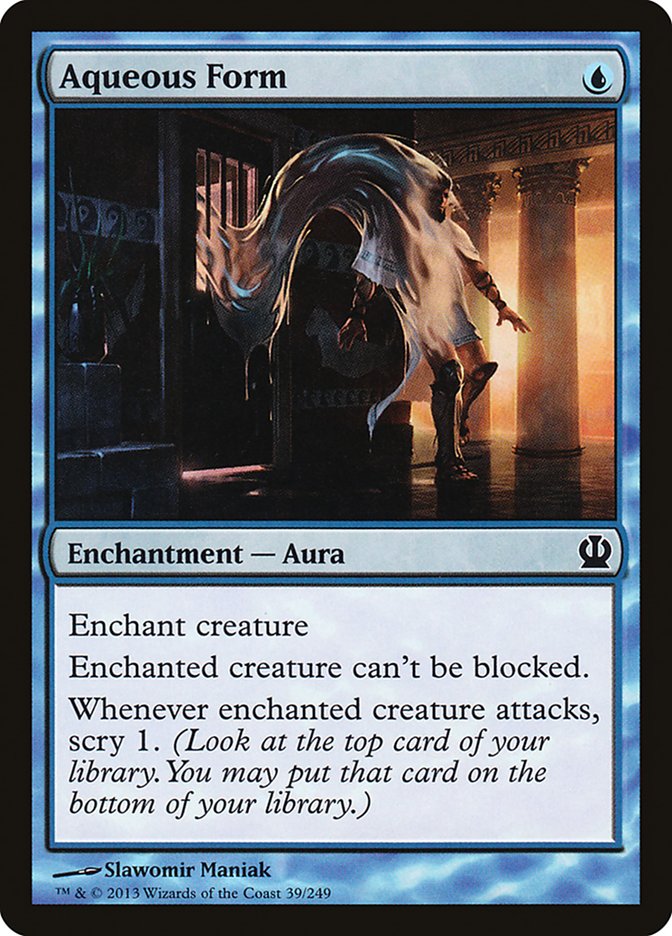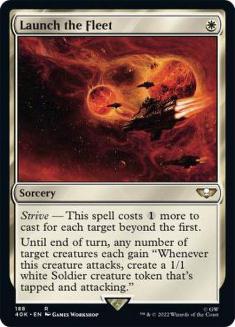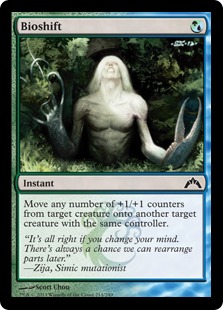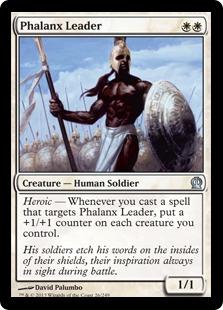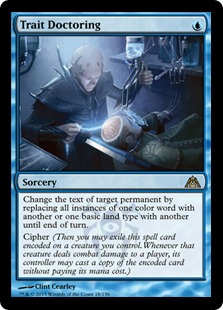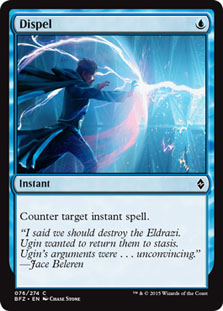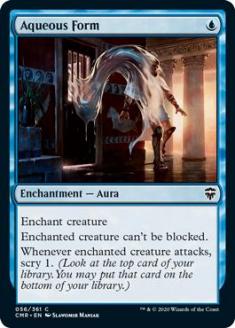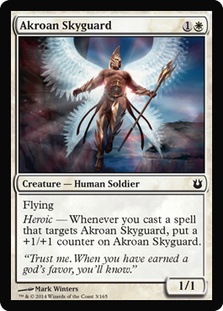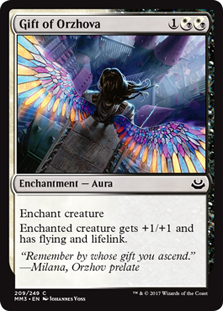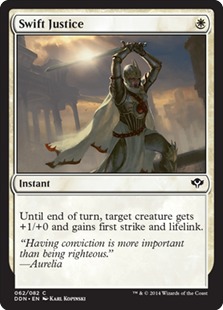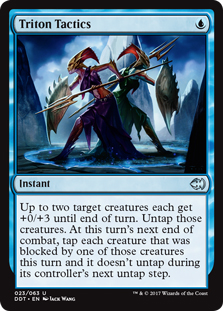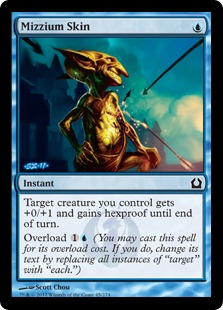Has it been almost six months already? Time flies by so quickly. As you may or may not have noticed, I haven’t written an article since the end of January!
Unfortunately, between school, work, and everything else that life entails, I haven’t really had much time to play Magic for the past few months. As a
result, I haven’t had very many exciting things to write about, so I took a few months off in order to focus my attention elsewhere. I was down but not
out.
School has significantly slowed down for me recently, and I now have greater control over my work schedule, so I can start putting more focus back into
Magic. I’m still not sure exactly what my writing schedule will look like, but I’m going to try to put out content as often as I can.
Getting to the relevant parts, as I don’t want to waste too much time in my first article back, I have quite the deck to show you. Standard has become
pretty drab as of late, and unsurprisingly, the combo player in me attributes this to a lack of viable combo decks in the format. At the Season One
Invitational in Charlotte earlier this year, I had the pleasure of meeting a man by the name of Greg Hatch. Summed up in one word, this man is a maniac.
Greg is notorious (at least by me) for having a complete compendium of every remotely playable Magic card circulating throughout his brain. For the past
few months, he has been working on a Heroic-based combo deck that takes advantage of the cards at the bottom of the barrel in Standard. When I met him, he
was debating the merits of Reef Shaman and Tidal Warrior in Legacy Merfolk, so the heroic deck was unsurprising coming from him.
The basis of this deck is to use creatures that get larger through Heroic, and efficient spells to trigger the namesake ability. Hidden Strings forms the
core of the spell package, as it can trigger two creatures every turn in addition to other cool tricks that I’ll get to later. On top of that, you use
one-mana spells that protect your creatures from removal and trigger heroic in the process. While the deck can play the long game, it typically aims to put
an unreasonable amount of power on the board by the second or third turn.
Unfortunately, the deck never really took off as the Esper matchup was just too bad. In a metagame of anything but Esper, the deck was a solid choice, but
Supreme Verdict backed by lifegain was too much work to fight against. I never got fully behind the deck, until I got a message from Greg a week or two
later; “Sage of Hours changes everything!” At first, he was right. It gave the deck a new Heroic creature that allowed it to start doing insane things a
little bit sooner. We molded the deck to still be the same shell, but to also optimize Sage of Hours with cards like Bioshift. We ended up at something
like this:
Creatures (19)
Lands (18)
Spells (23)

The deck began to perform pretty well. You had a lot of insane opening hands that won the game on turn 3 or 4, and you had the ability to move to the
midgame and set up an insurmountable advantage. A lot of cards were tried out, but over time one big thing begin to stick out to us: Sage of Hours wasn’t
doing it. I’d be lying if I said I hadn’t taken infinite turns a few times, but I’d also be lying if I said I had done it often. Clearly sticking out as
one of the best cards, at least after sideboarding, was Aqueous Form. The random bouts of evasion were very important to winning a lot of games.
Enter Akroan Skyguard.
I began by shaving some Sage of Hours to try other things, and as soon as I added Akroan Skyguard, I knew I was home. It had natural evasion and cost white
mana instead of blue; a big help for our predominantly white deck. Suddenly, the deck began to take some drastic shifts. The cards that only really existed
for Sage of Hours were quickly cut, and once Satyr Hoplite was upgraded to Lagonna-Band Trailblazer, the mana base grew with the rest of the deck. Now, all
of the creatures could either be cast off of white mana or had a hybrid mana cost. After a few more tweaks and a sideboard overhaul, we ended up here:
Creatures (19)
Lands (17)
Spells (24)
- 3 Mizzium Skin
- 2 Boros Charm
- 1 Bioshift
- 4 Hidden Strings
- 4 Trait Doctoring
- 4 Gods Willing
- 4 Ajani's Presence
- 2 Launch the Fleet
Sideboard

Now seems like a reasonable time to explain the different parts of the decklist, so here we go.
These are the core creatures of the deck. They all have Heroic, taking full advantage of the bevy of spells throughout the deck. Important to note is that
they all cost white which is a big reason they are played over the other options like Satyr Hoplite and Sage of Hours.
Lagonna-Band Trailblazer has more toughness than decks like Burn can usually deal with which is nice in matchups like those that have a lot of cheap,
efficient removal. Akroan Skyguard has natural evasion, allowing you to take a lot of weight off of cards like Aqueous Form and Gods Willing to get through
damage.
Phalanx Leader plays a key role in the matchups where you want to play out many different creatures and diversify your damage. The double-white cost was
initially prohibitive, but once the creature package became mostly white, we were able to add more white lands to supplement it.
Nivmagus Elemental is the centerpiece of your most insane draws. A lot of your spells are often just there to add counters to your heroic creatures. The
text on the spell itself is almost irrelevant much of the time. Nivmagus Elemental allows you to put the spells to good work, giving itself a sizeable
boost in power with each one. It breaks the rule of creatures only costing white, but his hybrid mana-cost allows him to be cast off of almost every land
in the deck.
These are the core spells of the deck that allow you to really “go off” on your opponent. Trait Doctoring is mostly here because it has the words “target
creature” and “cipher” on it. The rest of the text is quite often irrelevant. You want to be able to hold your protection spells to actually protect your
creatures, so Trait Doctoring allows for a cheap and efficient way to get a lot of counters on your creatures fairly quickly.
That being said, the text isn’t all useless. Trait Doctoring can break the links on a Chained to the Rocks, turn Blood Baron of Vizkopa off for a turn, and
mess with Master of Waves in interesting ways. My favorite play I’ve ever seen with this deck was when an Akroan Skyguard with a ciphered Trait Doctoring
and Nivmagus Elemental were attacking. A helpless Mono-Blue Devotion player blocked Nivmagus Elemental with Master of Waves, expecting the protection to do
the work. Before damage, Akroan Skyguard was given first strike with Boros Charm and after first strike damage, the ciphered Trait Doctoring triggered and
changed the Master of Waves protection to black. It wasn’t long before Master of Waves sunk like the Titanic.
Hidden Strings is also generally used just to trigger two instances of Heroic, but it can also do some more interesting things. First of all, you can untap
lands with it, allowing you to play and cipher multiples on the second turn. Then, after damage, you can make sure you have mana left up for protection
spells. It can also turn your attackers back into blockers when you are in a tight race, and in weird corner cases it can fix your mana.
The important thing to remember is that you can exile the copies of the cipher spells to Nivmagus Elemental. As long as the original resolves so that you
can cipher the spell, all subsequent copies from the cipher trigger can be exiled without affecting the spells cipher.
These are the protection spells that I’ve been talking so much about. They serve to protect your creatures from any dangerous blockers or removal spells.
Especially in the games where you want to go all in on one creature, it’s important to make sure that you aren’t just playing with a house of cards. One
removal spell could undo everything you’ve worked to build, so you need a solid foundation.
Gods Willing has the small added benefit of allowing you to get through blockers, mainly if they are all one color. Sometimes you need those last few
points of damage. The scry 1 can also come in handy from time to time to help set up draws when you are looking for something specific.
Boros Charm is barely a protection spell. While that mode is great, it would be too expensive if all it did was stop removal and wrath effects. That being
said, it’s nice when it can save your whole team from an errant Supreme Verdict, or an Aqueous Form from an unexpected Abrupt Decay. What it really shines
at though is killing your opponent quickly. The four damage is nice if your opponent finds a way to stabilize against you. It can be difficult to get
through damage once your opponent has your creatures locked up, and then you have to sit there and wait disparagingly while they kill you with only four
life left.
Double strike is my favorite mode on the card as it is both powerful and fun. It can lead to numerous turn 3 kills out of nowhere, it triggers heroic, and
it allows Cipher to trigger twice in one combat. Having three instances of Cipher on the stack before you even go to regular damage is definitely something
your opponents don’t want to deal with.
By now, you may have noticed that Boros Charm is the only card in the entire deck that requires us to play lands that tap for red. I firmly believe that it
is worth stretching your mana base, but I wouldn’t fault anyone for morphing into a UW deck with a mildly more consistent mana base. Boros Charm does a lot
of awesome things and for the most part, it doesn’t hurt to splash it, so I would definitely try it out before deciding to cut it. It’s also worth
considering, if you don’t like Boros Charm, a green splash for cards like Mending Touch and Unflinching Courage.
These spells serve a wealth of unique functions, most of which I don’t have time to list, but what they do best is act as additional ways to trigger
heroic. Protection spells are inefficient at putting counters on your heroic guys if that is all they are doing, so you need additional ways beyond cipher
to pump your creatures without wasting your shields.
Launch the Fleet can target multiple guys, put out a lot of damage in a single turn, and act as an efficient way to play around Devour Flesh without
throwing away your extra creatures. The soldiers are also useful for sacrificing to Desecration Demon or getting through the last few points of damage when
the opponent is busy chump blocking your other giant creatures.
Bioshift was originally cut when Sage of Hours left the deck, but it found its way back in as a one-of. It’s a lot better when Mutavault is in the deck,
but I can’t bring myself to play Mutavault in a seventeen-land deck. Essentially, it allows for you to trigger Heroic twice at a moment’s notice, as well
as move counters around so that combat is as advantageous as possible. If the opponent tries to kill your biggest creature, you can save most of it by
moving the counters elsewhere. Worse comes to worst, you can just trigger heroic twice and then exile it to Nivmagus Elemental.
The mana base is nothing special. If you are feeling particularly greedy, you can cut a Plains or a Steam Vents for a Mutavault. It serves as added Devour
Flesh protection, gets through extra points of damage, and is pretty sweet with Bioshift. Personally, I find it way too greedy to play a land that casts
almost nothing in your deck without adding an additional land to the deck. In that regard, Mutavault would be taking up a spell-slot which is much more
reasonable.
If you add more Bioshifts to the deck somewhere, I recommend cutting the Plains for Temple Gardens so that every land casts Bioshift, but in the aggressive
matchups the extra life you save by playing Plains instead is important. One Bioshift isn’t enough to risk sacrificing those extra percentage points,
especially since those are the only two lands that don’t cast Bioshift anyway.
These are your sideboard cards for the aggressive matchups. Especially against Burn, lifegain is very important for winning races. Gift of Orzhova is a
little pricey and in many cases, you only want to play it if you’ll have mana to protect your creature. This can be done by either getting to four mana, or
using Hidden Strings if you can get the first attack through unscathed. The Plains is there to supplement your ability to cast the most expensive spell in
the 75.
Swift Justice is nice for buying time while you set up Gift of Orzhova and also making sure you always come out ahead in combat while your creatures are
still small. Triton Tactics allows you start getting through points of damage in the early game but still answer opposing aggression. In addition, it can
trigger two instances of Heroic and prevent your creatures from dying to burn spells.
Lastly, Gift of Orzhova is just another solid form of evasion which is especially important with many of the aggressive decks being able to gum up the
ground quickly. Just be careful to play around Skullcrack, as it can often spell your demise if you fail to play around it when you otherwise could have.
These serve as additional protection spells for the control and midrange matchups. Dispel is nice because it also acts as a counter for Devour Flesh, which
is something that your other protection spells can’t accomplish. Important to note though is that in certain matchups like against Mono-Black Devotion,
Boros Charm isn’t actually that great of a protection spell when you’re on the draw. It will almost always fall behind your opponents removal spells and
then just end up sitting in your hand. Board in the extra copies sparingly when you are on the draw.
Would it be weird if I told you that one of the best cards in the deck was a sideboard card? Aqueous Form initially started firmly in the main deck, but
Greg and I quickly shifted to a new plan. Against aggro and midrange decks, you can steal a lot of game 1s, as they just aren’t tuned to beat you pre-board
and have no idea what you are doing. We wanted to focus our maindeck heavily on making sure that we could beat control decks that are always filled to the
top with removal spells and wrath effects in game 1.
Aqueous Form got moved to the sideboard as it isn’t great against control decks, but it really shines against creature-heavy aggressive decks as well as
midrange decks like Monsters. It triggers heroic, gives you an easy way to slide through blockers, and allows you to set up your draw step every turn so
that you can have a constant stream of protection spells coming from the top of your deck.
Now that we understand the individual card choices, I’ll show you how I like to sideboard in some of the more important matchups in standard.
Mono-Black Devotion
Out on the Play:
In on the Play:
Out on the Draw:
The general strategy on the play is to just jam a creature on turn 1 and 2, and then you just leave up protection spells for the rest of the game, of which
you now have many thanks to the extra Boros Charms and the Dispels. On the draw, you become a bit more susceptible to Devour Flesh regardless of what you
do, so you just want to make sure that the first creature you stick will be able to punch through the Pack Rats and Desecration Demons that your opponent
plays. You won’t have time to just sit there and hold up protection, so Boros Charm is just a bit too expensive. You need to be able to cast your
protection spells for one mana so that you can advance your board at the same time.
Esper Control
Out:
In:
In this match-up, you just want to stay ahead of their Supreme Verdicts and removal spells with your protection spells, while taking away chunks of their
life total. Don’t be afraid to just put a Phalanx Leader and another creature in play and just sit there, waiting. You have to make sure you enough power
to deal with a Jace, Architect of Thought, but otherwise you can take away small chunks at a time if you have protection spells to back it up. Ajani’s
Presence was the big card that turned this matchup from very tough to reasonable, as you now have access to a solid answer to Supreme Verdict. Mana
Confluence also makes the Boros Charm splash much easier, so now, Supreme Verdict is barely a problem.
Burn
Out:
In:
The biggest card in this matchup from the other side is Eidolon of the Great Revels. Even if they resolve it on turn 2, you can beat it, but make sure that
you keep it in mind. Don’t deal damage yourself unnecessarily, and don’t be afraid to block. Remember that casting a spell off of a cipher trigger is a not
mandatory, and don’t keep a hand that isn’t capable of racing. Lagonna-Band Trailblazer and Nivmagus Elemental are the best creatures in the matchup, so
don’t just run them into Chained to the Rocks if you don’t have to.
Monsters
Out:
In:
This matchup is fairly straightforward. They don’t do a whole lot that you care about, so just steer clear of Abrupt Decay, Dreadbore, and Mizzium Mortars.
Evasion is key, as they are the best at holding down the ground. Akroan Skyguard and Aqueous Form are obviously the cards you need to get through. Triton
Tactics is surprisingly a pretty good card in the matchup. It makes sure that they cannot race you and can often just let you eat their biggest creatures.
With M15 on the horizon, I’d be crazy if I didn’t at least mention the impact that the set will have on the deck. In short, M15 is not going to cause much
to change with the deck. Nothing from the set really fits the archetype, and nothing really goes into other decks that might hurt this one. I think that
with the release of cards like Chord of Calling, Sign in Blood, and Garruk, Apex Predator, people are going to start making their decks a bit more top
heavy than usual. This is a good shift for Hidden Strings, as it means people will have a much harder time keeping up with the efficiency of the deck.
Coming to a close, that’s about it for today. I tried to be as detailed as I could in this article, but there are likely things I missed. If you want to
know anything about the deck such as sideboarding in other matchups, certain undiscussed card choices, or just need me to clarify anything, feel free to
post in the comments. I’d also love to see your take on the archetype, so go ahead and share whatever you have.
While this deck might not be the best deck in Standard, I strongly recommend you consider it if you are looking for something new and exciting. It is a ton
of fun to play, and it can certainly compete with the top decks. Get some practice in first though, as this deck is deceptively difficult to pilot to its
fullest potential. While Wizards might not ever print Storm in Standard again, Hidden Strings can certainly do a very good combo impression.

